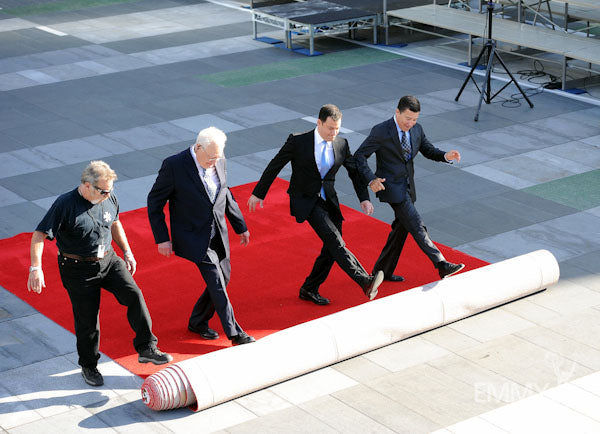
The Forest of Lost Products, courtesy of pixabay
In the past, we have shared a lot about what goes on behind the scenes to design, manufacture, deliver, and continually improve our Smart Vent System. But, what good is it to build the perfect product if no one knows it exists? It is becoming easier for startups to get their products in customers’ hands, but e-commerce channels alone rarely move a product from early adopters to mainstream customers. Having a presence in a retail store gives potential customers the opportunity to see and hold your product and is often seen as a mark of quality.
Step 1: Picking the right partner

Image courtesy of Inc.com
It may sound simple, but selecting the correct partner is the first step to having success in retail. For the Smart Vent System, both Lowe’s and Best Buy are great partners to Keen Home. They both serve customer demographics that align with ours and have dedicated smart home teams in their organizations that are committed to the success of products like the Smart Vent System.
That being said, we had a variety of other retailers reach out to sell our product. It can be very tempting for a young company to take every deal that comes along, but it is important to think about the totality of the partnership, not just the short term gains. Is Home Depot the right place to sell a baby monitor? Will smart lawn sprinklers sell well at Bed, Bath and Beyond (possibly in the “Beyond” section of the store?).
Step 2: Vendor agreements
Image courtesy of newsday.com
The next step toward getting on store shelves is to negotiate the vendor agreement with the retailer. After going through this process a few times, here is a quick tip: don’t spend too much time or money working through every clause in the agreement. The reality is that these agreements are boilerplate and companies like Samsung and Whirlpool end up signing them. What I would recommend is having your contract attorney look for any “land mines” or deal-breaker clauses in the agreement. Oftentimes, these deal-breakers can be worked out through a separate agreement that is specific to your company (often called a "rider" or a "Statement of Work").
There are a few areas you do want to focus your negotiation efforts on. The first is payment terms. Cash flows are so important to a hardware startup, so anything you can negotiate to improve the time it takes to get paid for your product the better. It is not uncommon to for a large retailer to agree to a prepayment discount. They will gladly pay 30-60 days early to save 1%-2% and chances are you will gladly pay a 1-2% penalty to get paid early.
The other area to focus on is the Minimum Advertised Price (MAP). This becomes very important as you expand your distribution. If one of your retail partners lowers the price of your product, others will normally follow suit. Having a MAP in place prevents a price free-fall situation from occurring. Some e-commerce retailers actually require that you have MAP pricing with any party that can sell your product.
Step 3: Preparing for launch

Image courtesy of jpl.nasa.gov
Now that the deal is in place, it is time to get everything in order for a successful launch. This is where having a great distributor will pay dividends. Each retailer has a specific way they want to receive goods, and it takes a great distributor to keep all this information straight. The other thing to remember is that it can take months to get set up in a retailer's system. This includes adding your product (SKUs, barcodes, etc.), generating purchase orders, shipment notifications, etc.
The other area requiring preparation is marketing/PR efforts. Getting into retail is a big deal, but the end goal is to sell product. This requires building awareness around your retail rollout. In addition to generating your own marketing initiatives, leverage your retailer’s marketing team to make their customers aware of your partnership. This awareness can come in the form of in-store displays, weekly flyers, email campaigns, or press releases.
Step 4: Retail rollout

Image courtesy of emmys.com
If the preparation is done correctly, having product hit store shelves is an opportunity to celebrate a win with your team. There may be a few bumps along the way, but when you consider your product is now on shelves across the country a few issues are to be expected.
This is a good time to finalize a reporting process with the retailer so you can begin to track your product’s sell through and return rates. Don’t obsess over these numbers initially as it takes some time for the retailer to fully integrate your product into their marketing and training initiatives.
Step 5: Long-term success

Image courtesy of cuinsights.com
Rolling out a product on store shelves is really just the beginning of the relationship between company and retailer. The success of the relationship is definitely driven by sales, and there are a variety of things you can do to help positively influence them.
- Co-marketing campaigns: work with your retailer to provide them an incentive to include your product in direct and email marketing campaigns
- Alternative merchandising: work with the retailer's merchandising team to identify the best in-store location for your product
- Social promotion: promote your retail relationships through your own social channels
All in all, partnering with retailers is a great way to enhance your product’s exposure and ultimately increase sales. Now we would like to turn it over to you: do you have any go-to-retail stories? What best practices would you share with your peers? We would love to hear from you; just leave a comment below.
